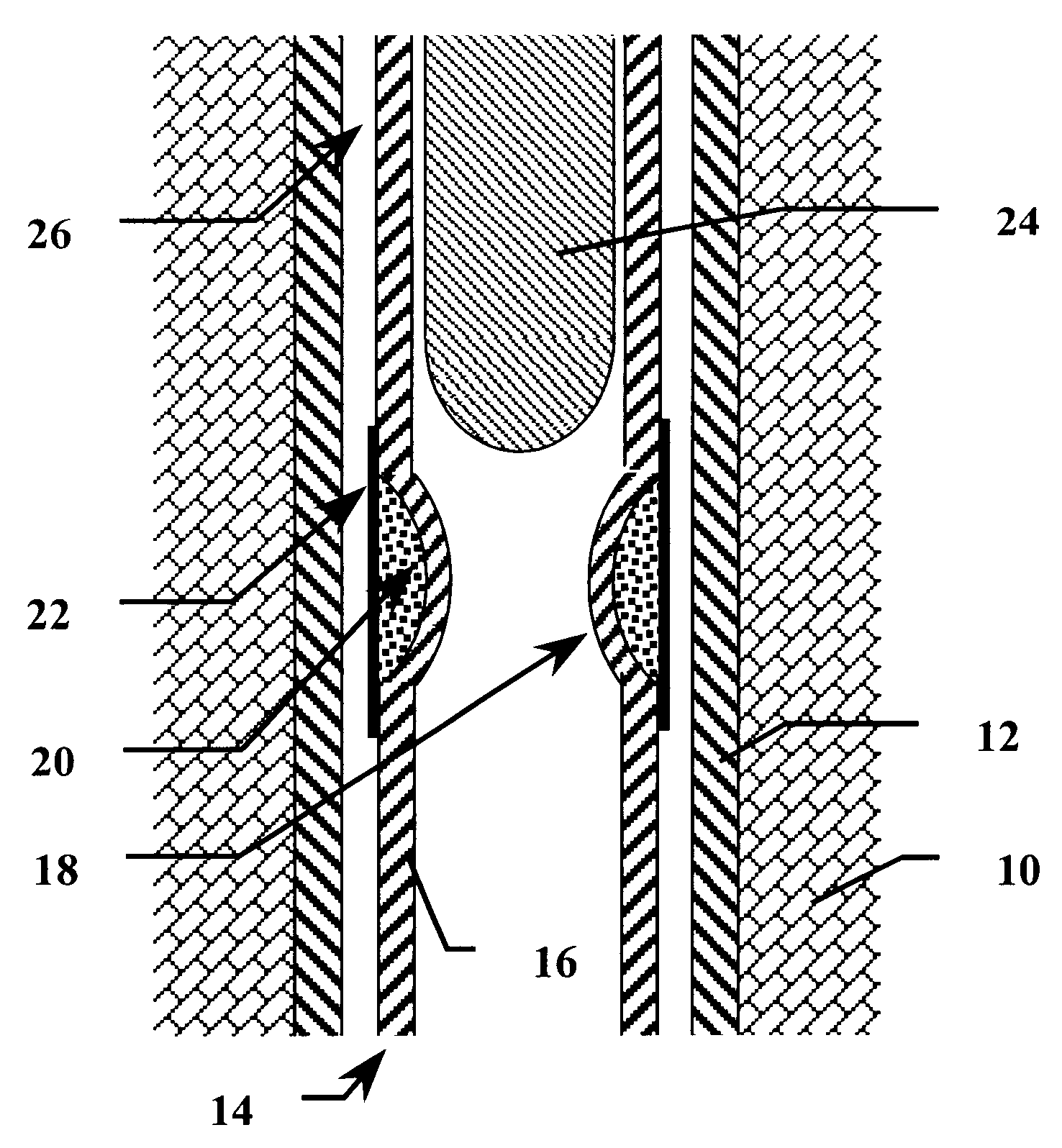Method and apparatus for expansion sealing concentric tubular structures
a technology of concentric tubular structures and sealing methods, applied in the direction of hose connections, cable terminations, borehole/well accessories, etc., can solve the problems of complex mechanisms, heavy structure, and failure to meet the requirements of the environment, and achieve the failure of complex mechanisms and the development of structurally heavy mechanisms for the placement of casing seals
- Summary
- Abstract
- Description
- Claims
- Application Information
AI Technical Summary
Benefits of technology
Problems solved by technology
Method used
Image
Examples
Embodiment Construction
A key feature of the structure of the present invention as described above is the differential movement of the seal element made possible by the geometric design of the fluid storage area. The geometry allows the inner casing to be minimally deformed while still causing a large amount of expansion at the outer seal location. Long but shallow depressions can be used to store large amounts of deployment fluid. The only requirement to the geometry is that the sections of the inner tubular wall and the malleable / ductile cover sleeve be of sufficient strength to resist the hydrostatic pressure developed during deployment and operation of the seal element.
Reference is made to FIG. 7 for a detailed description of a preferred geometry to the depression formed within the inner tubular wall as described above. In FIG. 7 a detailed cross sectional view of inner tubular wall 16 is shown. Annular depression 18 is shown in cross section as well. Partially compressible fluid 20 is positioned withi...
PUM
 Login to View More
Login to View More Abstract
Description
Claims
Application Information
 Login to View More
Login to View More - R&D
- Intellectual Property
- Life Sciences
- Materials
- Tech Scout
- Unparalleled Data Quality
- Higher Quality Content
- 60% Fewer Hallucinations
Browse by: Latest US Patents, China's latest patents, Technical Efficacy Thesaurus, Application Domain, Technology Topic, Popular Technical Reports.
© 2025 PatSnap. All rights reserved.Legal|Privacy policy|Modern Slavery Act Transparency Statement|Sitemap|About US| Contact US: help@patsnap.com



